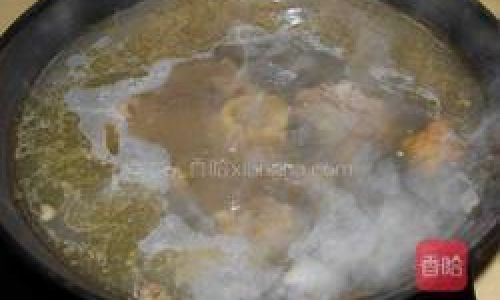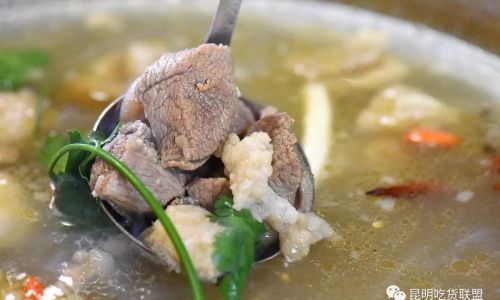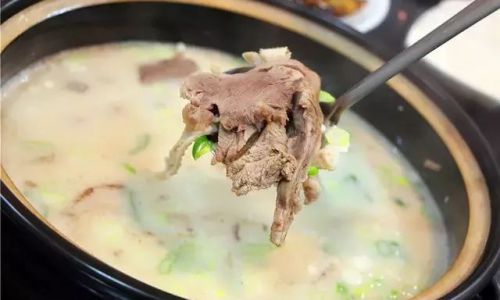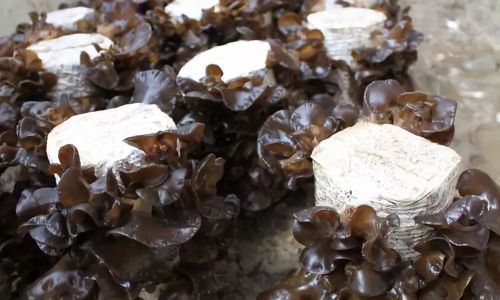Introduction

Mutton soup pot, a dish that combines the rich flavors of mutton with a variety of spices and vegetables, is a culinary delight enjoyed by many. Whether you’re hosting a dinner party or simply want to treat yourself to a hearty meal, learning how to make a mutton soup pot can be a rewarding experience. This article will guide you through the process step-by-step, ensuring you create a dish that is both flavorful and satisfying.
Section 1: Understanding the Ingredients
Before diving into the cooking process, it’s essential to understand the ingredients you’ll need. A well-prepared mutton soup pot relies on a balance of flavors, textures, and nutrients. Here’s a detailed look at the key ingredients:
Mutton:
The star of the show, mutton provides the rich, earthy flavor that defines this dish. Choose mutton cuts that are suitable for slow cooking, such as shoulder, neck, or shank. These cuts are typically more flavorful and tenderize well during the cooking process.
Bones:
Mutton bones, especially those with marrow, add depth and richness to the broth. They also provide essential nutrients and collagen, which contribute to the soup’s body and texture.
Vegetables:
A variety of vegetables enhances the soup’s flavor and nutritional profile. Common choices include carrots, celery, onions, garlic, potatoes, and turnips. Each vegetable brings its unique flavor and texture to the pot.
Spices and Herbs:
Spices and herbs are crucial for seasoning the soup. Common options include ginger, garlic, bay leaves, black peppercorns, cloves, cinnamon, and star anise. These ingredients add complexity and warmth to the dish.
Broth or Water:
You’ll need a liquid base for the soup. While homemade mutton broth is ideal, you can also use chicken or vegetable broth, or simply water. The choice will affect the final flavor, so consider your preferences and the other ingredients you’re using.
Seasonings:
Salt, soy sauce, and fish sauce (optional) are used to season the soup. Adjust the quantities to taste, remembering that the flavors will intensify as the soup cooks.
Aromatics:
Ingredients like leeks, shallots, or spring onions can be added for an extra layer of flavor. These aromatics release their scent during cooking, enhancing the overall aroma and taste of the soup.
Condiments (Optional):
For serving, consider adding condiments like chili sauce, soy sauce, vinegar, or sesame oil. These can be offered on the side, allowing diners to customize their bowls to taste.
Section 2: Preparing the Ingredients

Once you have your ingredients, it’s time to prepare them for cooking. Proper preparation ensures that the soup cooks evenly and that all flavors meld together seamlessly.
Cleaning and Trimming:
Start by cleaning the mutton and bones thoroughly. Remove any excess fat, sinew, or blood clots. This step is crucial for a clean, flavorful final dish.
Cutting the Vegetables:
Chop the vegetables into bite-sized pieces. This not only makes them easier to eat but also ensures they cook evenly. For root vegetables like carrots and potatoes, peel them first.
Preparing the Spices:
Toast whole spices lightly in a dry pan until fragrant. This releases their oils and intensifies their flavors. Grind them if necessary, using a mortar and pestle or spice grinder.
Preparing the Aromatics:
Finely chop the aromatics, such as leeks, shallots, or spring onions. This helps them release their flavors more effectively during cooking.
Section 3: Cooking the Soup
Now that your ingredients are prepared, it’s time to start cooking. Follow these steps to create a delicious mutton soup pot.
Blanching the Mutton and Bones:
Begin by blanching the mutton and bones in boiling water for about 5-10 minutes. This removes impurities and blood, resulting in a clearer, cleaner broth. Discard the water and rinse the meat and bones under cold running water.
Making the Broth:
Place the blanched mutton, bones, and chopped vegetables (excluding potatoes and other vegetables that cook quickly) in a large, heavy-bottomed pot. Add enough water or broth to cover the ingredients by at least 2 inches. Bring to a boil over high heat, then reduce the heat to low and simmer gently.
Adding Spices and Herbs:
Tie the spices and herbs in a cheesecloth or spice bag and add them to the pot. Alternatively, you can add them directly to the pot if you prefer a more robust flavor. Let the soup simmer for at least 1-2 hours, skimming off any foam that rises to the surface.
Cooking the Vegetables:
After the broth has simmered for a while, add the potatoes and any other vegetables that cook more quickly. Continue to simmer until the mutton is tender and the vegetables are cooked through. This may take an additional 1-2 hours, depending on the cut and size of the mutton.
Seasoning the Soup:
Once the mutton and vegetables are cooked, taste the broth and adjust the seasoning with salt, soy sauce, and fish sauce if using. Remember that the flavors will continue to develop as the soup sits, so err on the side of caution when seasoning.

Finishing Touches:
Remove the spice bag or strain out the spices and herbs if you added them directly to the pot. Discard any large pieces of bone or fat that remain. Ladle the soup into bowls, garnishing with chopped herbs, sliced green onions, or a drizzle of sesame oil if desired.
Section 4: Serving and Enjoying
Your mutton soup pot is now ready to serve. Here are some tips for presenting and enjoying this hearty dish.
Presentation:
Serve the soup in large, warm bowls. Garnish with freshly chopped herbs, such as parsley, cilantro, or chives, to add a burst of color and freshness. You can also add a sprinkle of toasted sesame seeds or a drizzle of chili oil for added flavor.
Accompaniments:
Mutton soup pot pairs well with a variety of sides. Consider serving it with steamed rice, noodles, or crusty bread. Pickled vegetables, such as pickled radishes or cucumbers, can also provide a refreshing contrast to the rich flavors of the soup.
Customizing Servings:
Offer condiments on the side to allow diners to customize their bowls. Options like soy sauce, vinegar, chili sauce, or sesame oil let each person adjust the flavor to their liking.
Sharing and Enjoying:
Mutton soup pot is a communal dish, best enjoyed with family and friends. Serve it at the table and let everyone help themselves, creating a warm and welcoming atmosphere.
Conclusion
Making a mutton soup pot may seem like a daunting task, but with the right ingredients and careful preparation, you can create a dish that is both satisfying and delicious. This hearty meal is perfect for cold weather, providing warmth and comfort in every bite. Whether you’re a seasoned chef or a novice cook, give this recipe a try and enjoy the rich, flavorful experience of a homemade mutton soup pot.





0 comments